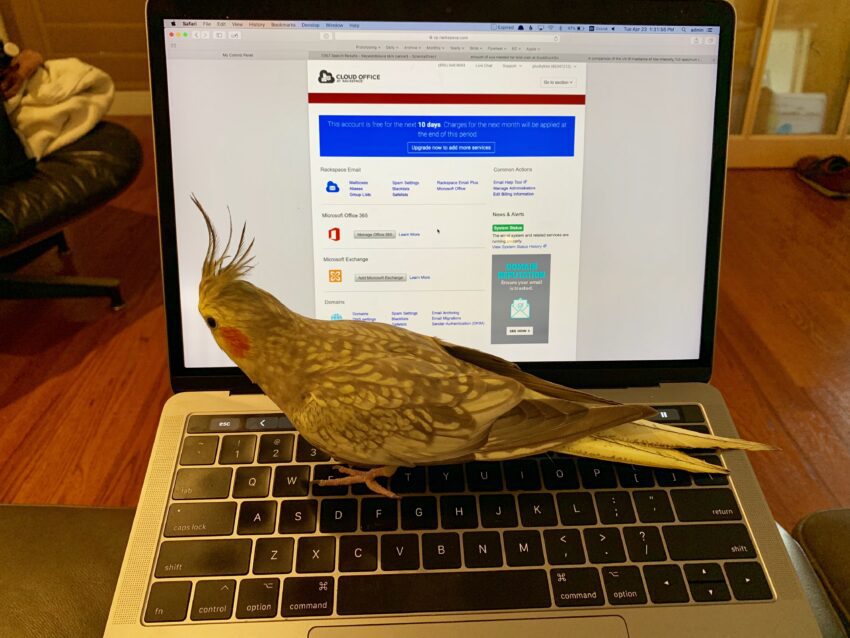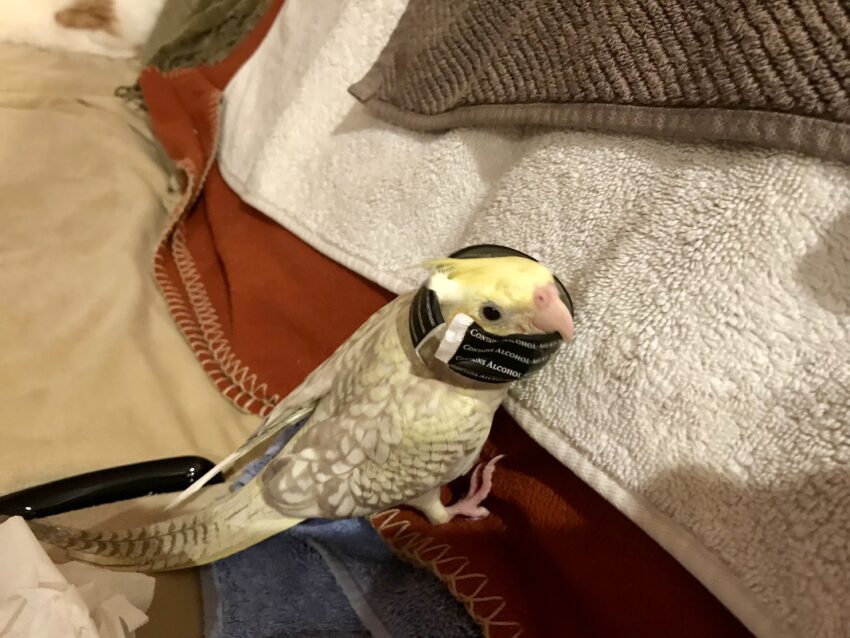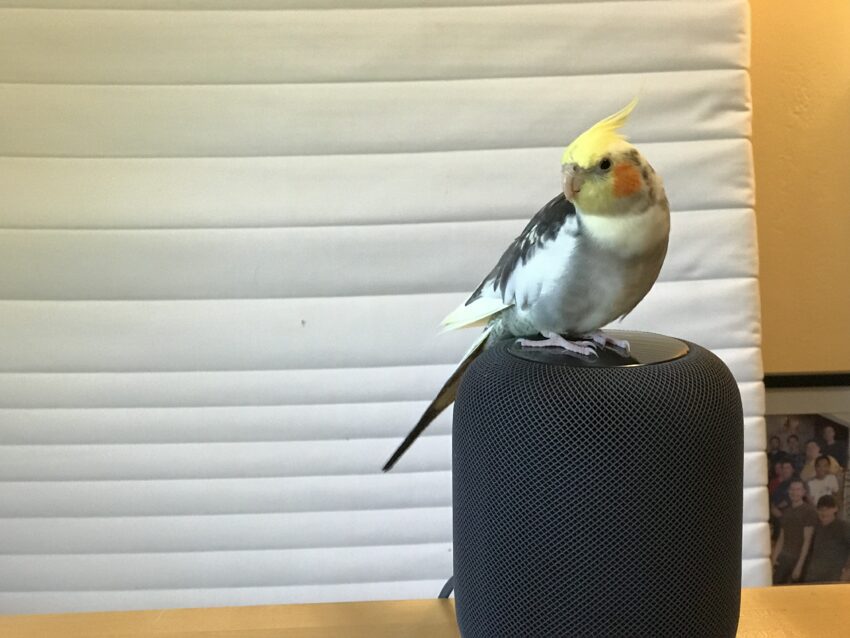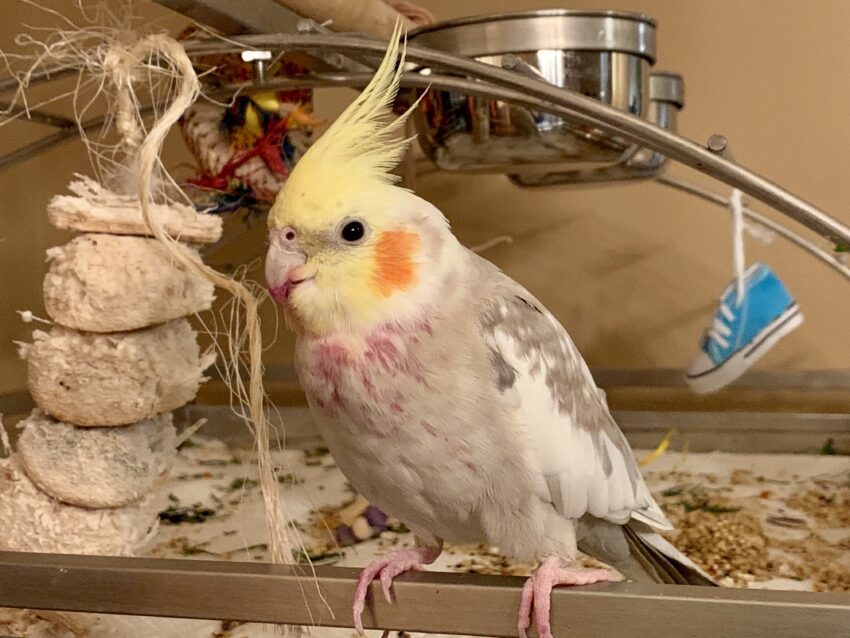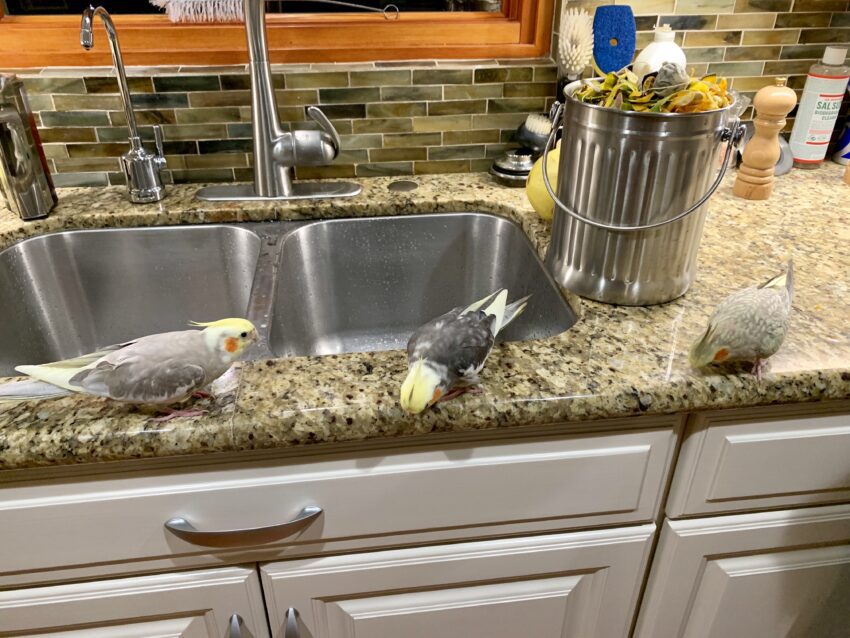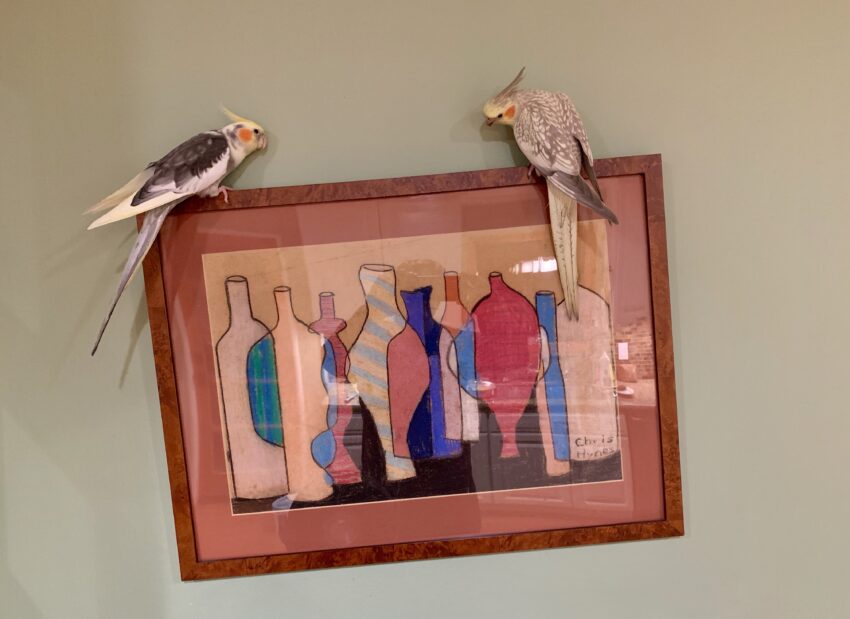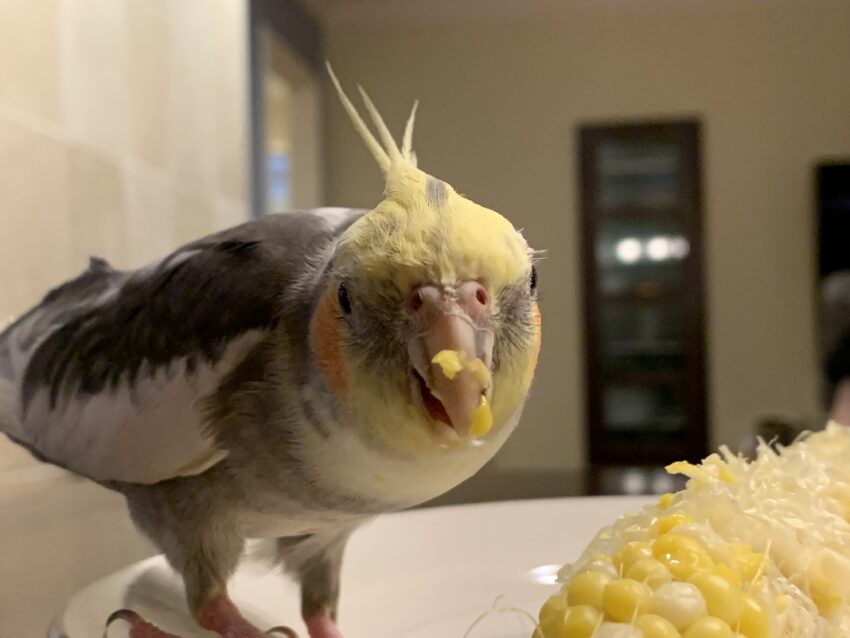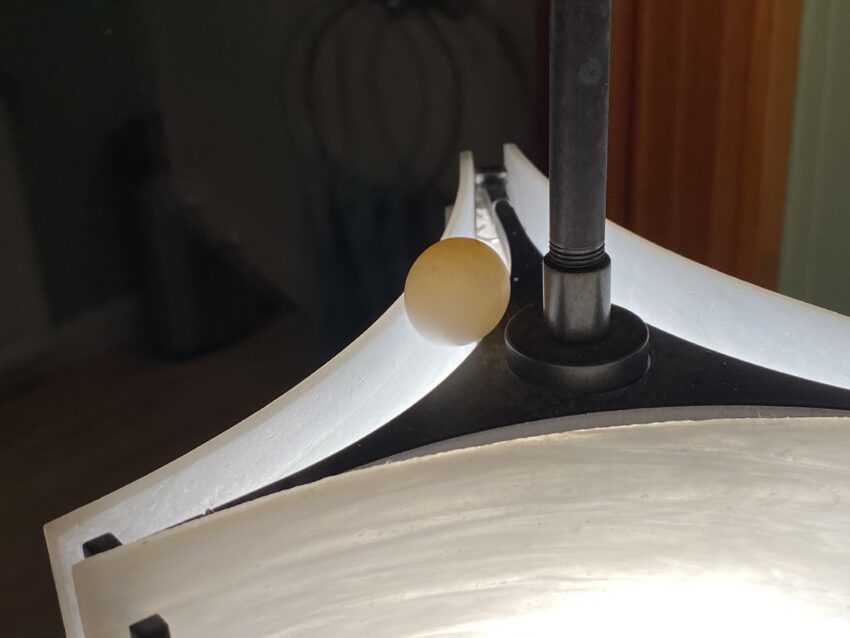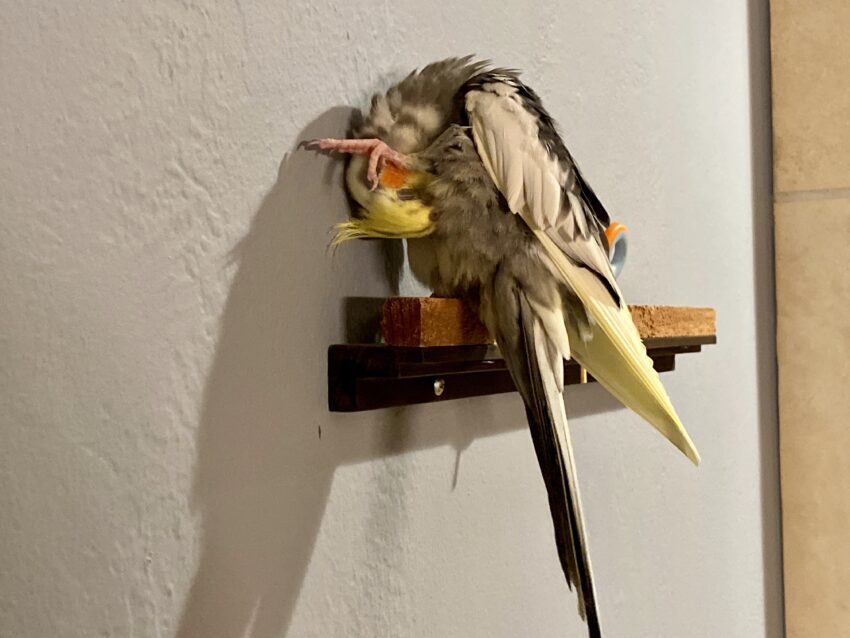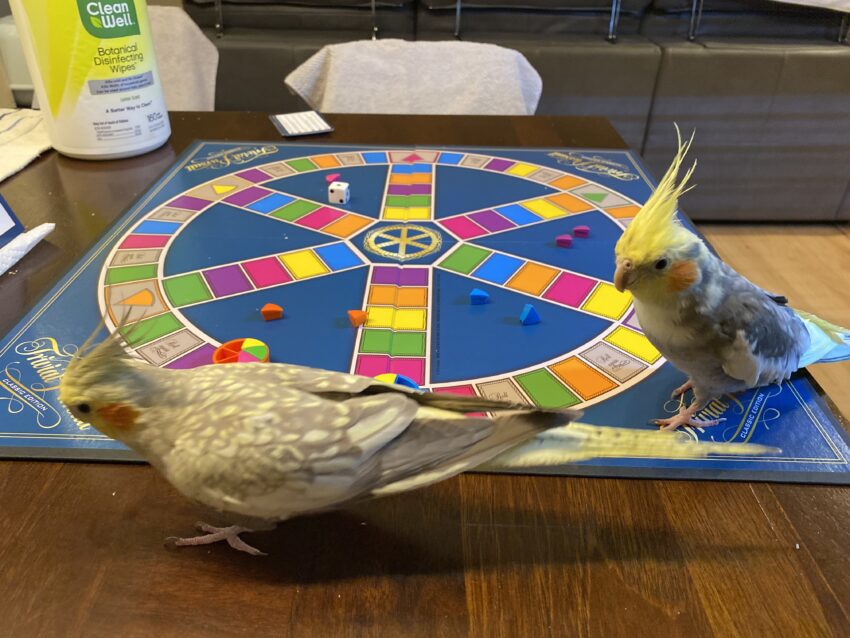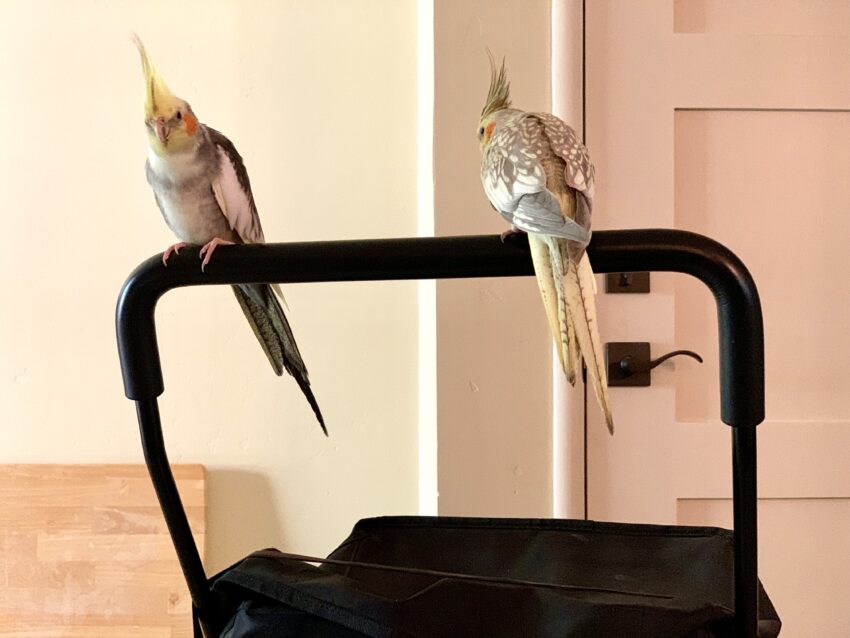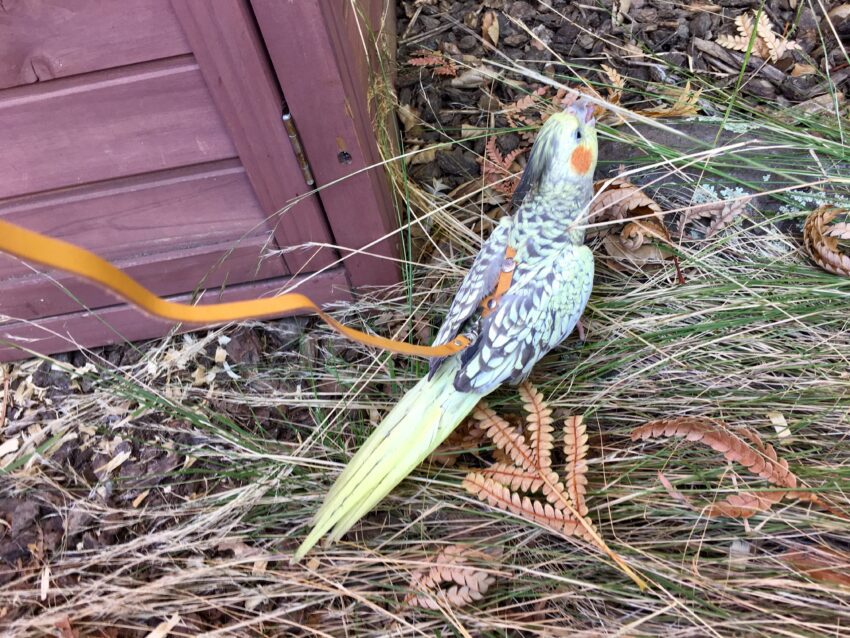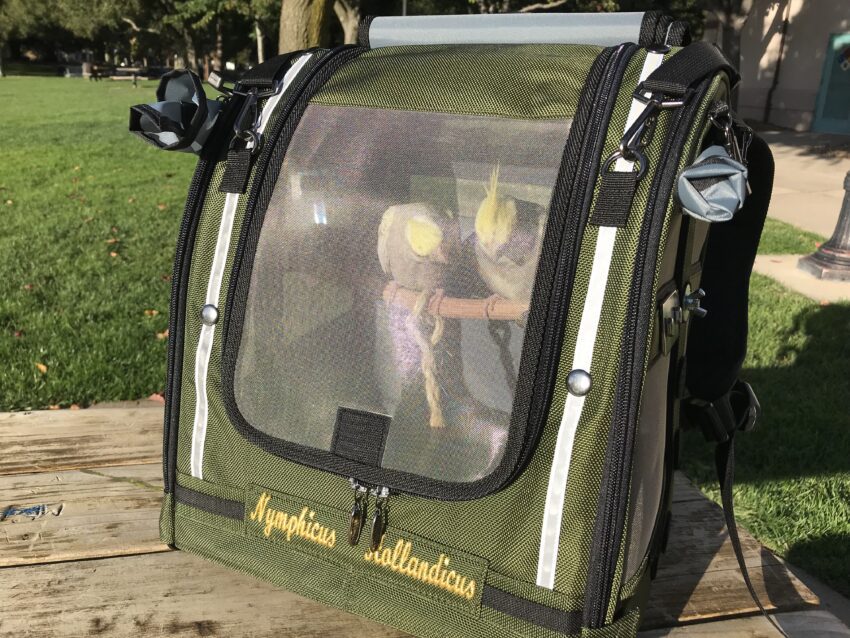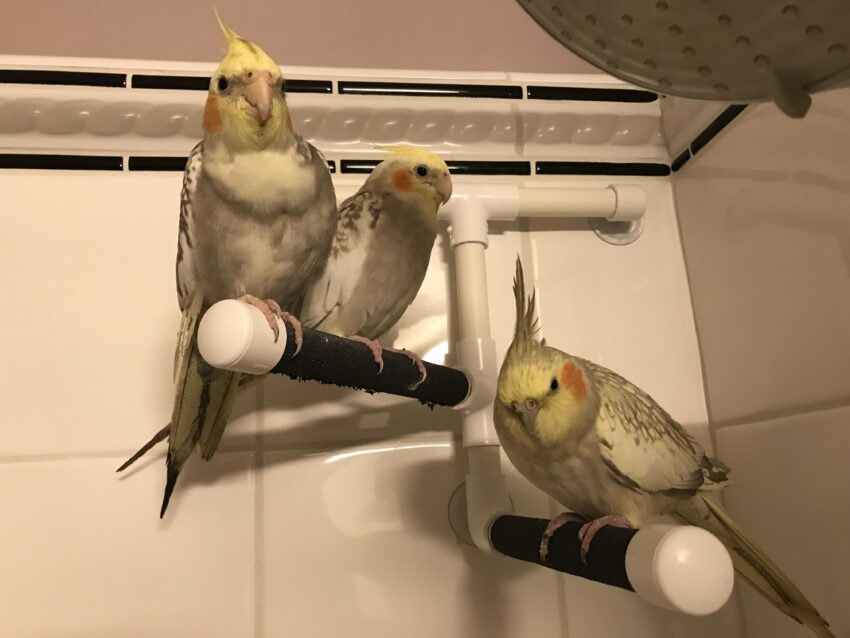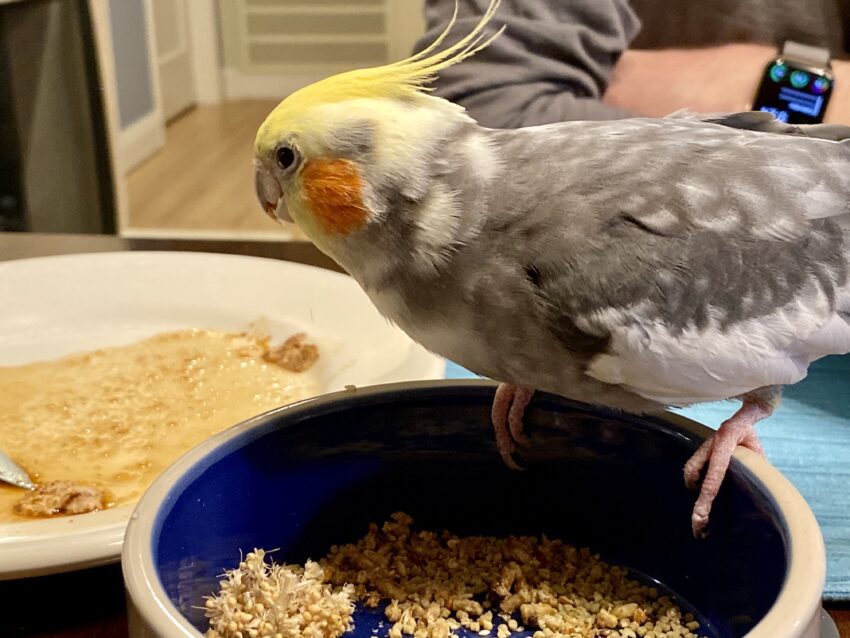
So you’ve decided to get a parrot…
[If you need to help with the decision to get a parrot, I’ve written a companion article called “So you’re thinking of getting a parrot…“]
A lot has changed in dog and cat ownership in the past few decades. Grain-based pellet (kibble) diets have given way to whole food and raw diets. People are creating runs for their dogs (and running them in dog parks) and building catios for their cats so they have more outdoor time. People generally don’t remove claws from their cats anymore.
The bird world sadly lags far behind. Vets (especially in the United States) have not been keeping up with scientific research or are set in their ways. The scientific community and university researchers have unlocked conclusions that mirror the dog and cat world pretty closely.
But let’s start with the basics.
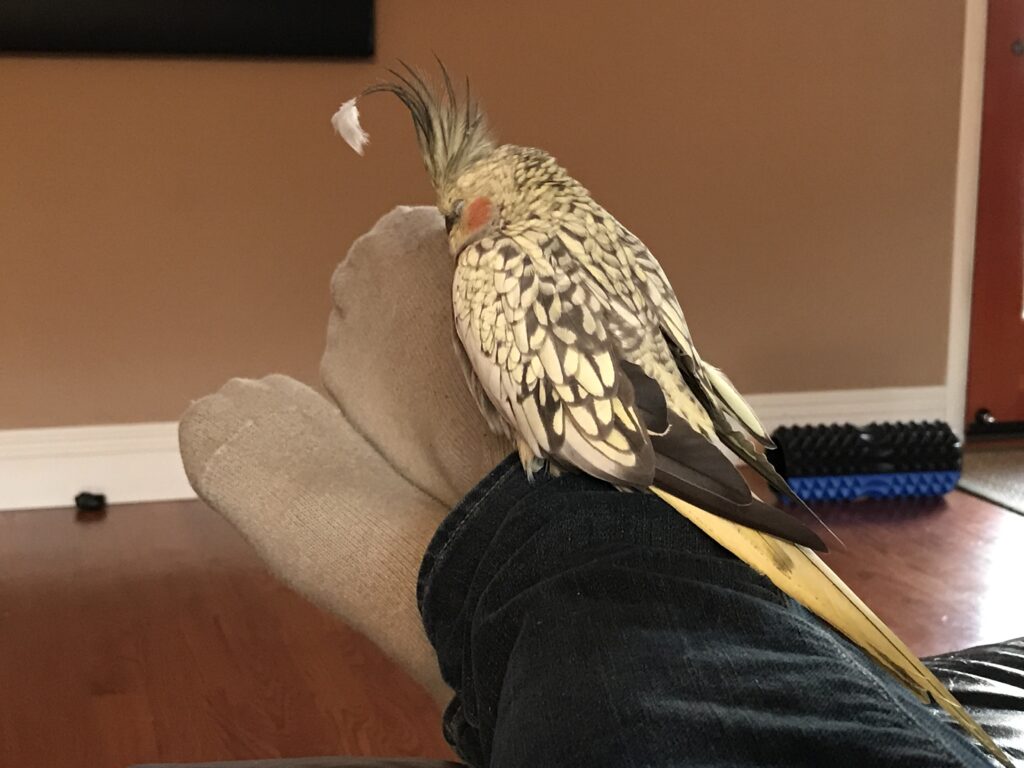
Where can you get a parrot?
This is a hotly debated issue in the parrot community. I’ve arranged them in my own order of most to least desirable. In the next section, I’ll describe exceptions to my advice.
Parrot rescue
Many people aren’t aware that such a thing as parrot rescue exists. Like an animal shelter, a bird rescue takes in unwanted birds and then fosters them out with adoption being the ultimate goal. These organizations rarely have their own facilities; instead birds are fostered in the homes of volunteers. These people usually have above-average bird experience and can get them into a good state for adoption, including socializing them. Try googling “parrot rescue near me” to see if you have one. Typically, they will be in metropolitan areas, but some will drive birds to their new owners. They will screen applicants just like many animal shelters do. These birds may not be tame and some may suffer physical and mental issues that led to them being given up, so it’s similar to adopting a dog from a shelter.
Note that you can also become a temporary foster family for a parrot while the rescue searches for a permanent home. This could be a good way to see how things go as a bird keeper and you can adopt the bird if it goes well.
Animal shelter
The largest animal shelters, typically within large cities, will sometimes take in birds and adopt them out. I used to volunteer in one near San Francisco. Even if they take in birds, they sometimes don’t have the same level of expertise as someone in bird rescue may have. They also may not have as much time to devote to a potential adoptee as someone in bird rescue would.

Private adoption
Although it’s often illegal to sell pets on sites like Craigslist and eBay, you may seem them listed anyways as “free” but with a “re-homing fee”, which is just a clever way to get around the rules. You may also see pets listed for sale on flyers or just hear about them from friends. Even though you may get a good deal, you don’t have the same protections you might have by getting a bird through a shelter or rescue, so it’s a buyer-beware sort of situation. I’d go this route only if you have a good amount of bird experience. Since shelters often charge money to “surrender” a pet, people will resort to unloading them through other means where they can avoid fees and maybe make some money.
Breeder
A parrot breeder can range from someone raising some birds for fun as a hobby (as I did when I was a teenager) to a full-time professional breeder. The biggest downside to a breeder is that there are so many unwanted parrots out there that it’s best to explore getting a parrot from a rescue or shelter first. Even though getting a juvenile bird from a breeder has its advantages, most rescue/shelter birds started as a breeder bird. With enough patience, any bird can become tamer and the experience of gaining a bird’s trust can be very rewarding. A small, amateur breeder can be preferable as each bird likely gets more individual attention. Being a professional breeder is a tough business, so they usually try to raise as many birds as possible to make ends meet.
Pet store
The first place people think of to get a bird is often the least desirable. First off, pet stores typically get their birds from large breeders anyways. It’s rare to find a bird-only pet store, so birds are often low priority after dogs, cats, fish, and other small pets. They will likely only have very basic bird knowledge. Like with breeders, pet stores are driven by profit and may not counsel you to make a good decision about a bird purchase. Note that some pet stores no longer sell birds either due to concern for unwanted birds, but also because some states have made it illegal.
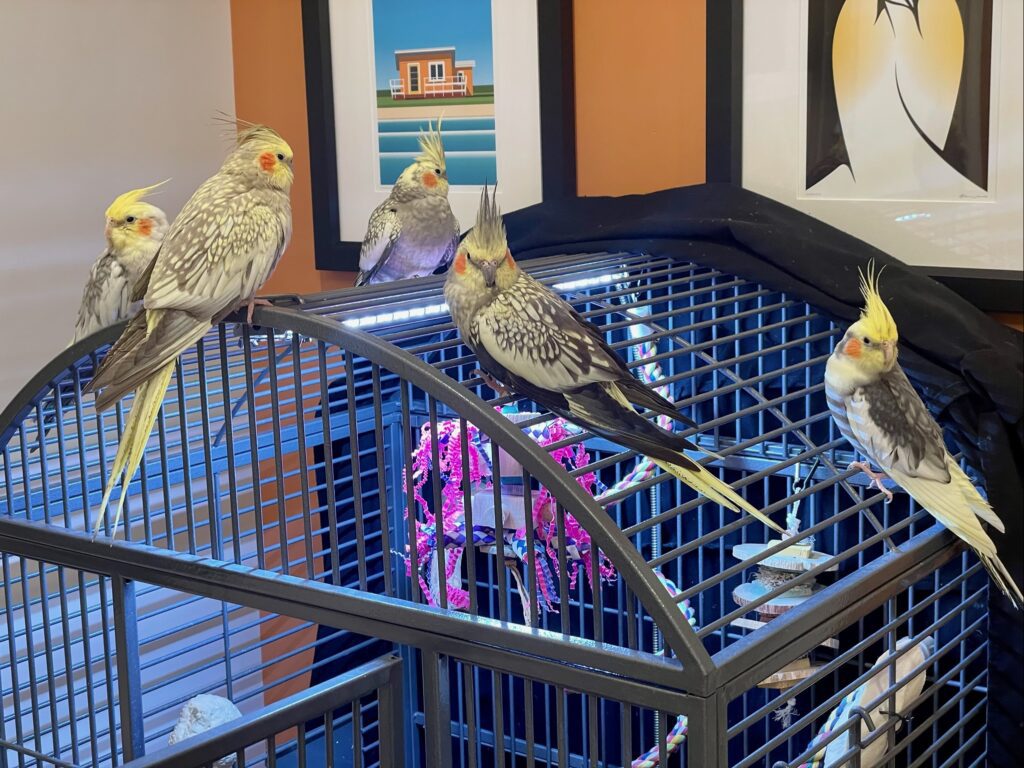
Where should you get a parrot?
Just like with cats and dogs, there are more unwanted birds than there are homes to place them in. If you get a bird from a breeder or pet store, think about the poor birds that is in foster care waiting for a forever home. So, the short answer is you should get a bird from a shelter or rescue. However, I don’t take a hard line on this and I think there are cases where purchasing a bird is OK.
Longer answer
Before expanding on this, I’ll mention that birds in the wild are in serious trouble. Very recent research indicates that close to half of all bird species in the world are in population decline and only 6% are actually increasing. Parrots are faring far worse, with 38% of species listed as “globally threatened” or worse.
I strongly believe that being exposed to birds first-hand is one of the best ways to educate people and inspire them to be passionate about protecting birds in the wild. There’s a concept of “ambassador animals”, which I think of as something like a modern petting zoo. An ambassador animal is trained to be very tame and comfortable around humans, who get a chance to see them up close, hold them on their hands and shoulders, look into their eyes, and experience their intelligence first hand.
In my home aviary, it’s great to give tours to people, many of whom have never even seen a bird up close before. I hope that it inspires people to care about birds more. I consider all my birds to be ambassador animals. Eleven of them are rescue/shelter birds and two were purchased from a hobby breeder.
I think certain species are better suited to being ambassador animals. I’m fine with purchasing this specific species from a breeder, especially if it’s hard to find from a shelter/rescue. I also think that it’s possible to more quickly and thoroughly train a hand-raised bird, especially if you’re not a professional bird trainer. In this case, as I think of the poor birds that don’t get adopted, I think you can argue that, in this case, the purchase of a bird may be for the greater good.

You now have a parrot!
Here are some important things to keep in mind as you welcome a new bird into your home.
Try not to be scared of everything
It’s very easy to fall prey to people on the internet that overreact and presume everything is dangerous to birds without there being any evidence of such. Always try to verify what you hear by consulting a reputable source. You don’t want to deprive your bird of the joy of exploring their world because you’re terrified of everything.
The room to be genuinely concerned about in the house is your kitchen. I mentioned non-stick cookware in another article, but be aware of the dangers of pots and pans on the hot stove, especially with birds that are not excellent fliers. Also, with a gas stove, make sure you have a vent hood that vents to the outside. You have to weigh the risks of the kitchen against the rewards of your bird spending quality time with you. Anything you think is dangerous to you (a knife?) is possibly dangerous to birds.
I have a book on caring for cockatiels that is 191 pages long. The word “veterinarian” appears 95 times! The answer to every question is to bring your bird to a vet. One symptom they mention is when your bird has a “feather pointed in the wrong direction”. Try to use some common sense and double-check your information even if it sounds reasonable.
Parrot-proofing your home
I always refer to parrots as “two-year-olds with wings”. Look around your house and imagine places they could land and things they could destroy. They will most certainly find places you never expected them to find! When you first get your bird home, watch them like a hawk for the first few times you let them out. Later, pay close attention whenever they discover a new place to play or you do some rearranging. You can’t watch them all the time, so be strategic about it. You want them to explore and learn for themselves while protecting your family heirlooms.
Give parrots time and freedom
The name of this blog is Free Range Parrots, after all. Birds love to explore. Playing and using their beak keeps their brains occupied. Flying releases dopamine and endorphins which are believed to give a bird feelings of happiness. Everything about what makes a bird a bird is driven by flight. Their aerodynamic bodies, the design of their feathers, their internal organs, and their digestive system are all designed to make flight possible. Birds love to spend time with their family, but just like with children, alone time is important. If you have multiple birds, they should get a good amount of time with their bird friends.
Try to work out-of-cage time into your daily routine. Meals are a great time to sit around the dining room table with your bird roaming around, sampling what’s on offer. Reading, watching TV, showering, and working in a home office all can be fun times out of the cage. For extra credit, you could either harness train your bird or get a bird backpack and bring them with you!
Recall training
I encourage people to try to train their birds to do some basic things. Stepping up is what people usually start with, and I think recall training needs to be second. Basically, this is training your bird to respond to your call and/or a gesture like holding your hand up into the air in order to summon your bird. If your bird is in an inaccessible place or has managed to escape, recall training could become very important.
Learn parrot body language
People have learned to read the body language of dogs and cats, but less is known about bird body language. It can be very useful when building trust with your bird or if you want to train them to do things. The most important ones to consider:
- Opening the beak and hissing is the ultimate sign of your bird telling you they feel threatened by something. You don’t want that something to be you!
- Leaning back as something approaches them is a sign that they don’t want it to move any closer.
- With some birds that have pupils you can see, the pupils getting very small (“pinning”) is a sign they are afraid.
You need to move slowly around your bird and observe their body language. Anything you do that causes a fear response in the bird will lessen some of the trust in you that has built up. If you are training a bird to step up, for example, move your hand closer to them slowly over time—sometimes this may take many training sessions—and be sure to not proceed until their body language indicates they are comfortable. If they are going about their business, preening, looking sleepy, or any “normal” activity, then you know they are fine with their current situation.
Diet
Just like with humans, parrot diet is a controversial subject and everyone’s got their own passionate opinion. Even a decision as basic as deciding whether to feed a seed or pellet-based diet is fraught with peril. I’ve got my own views.
Treats
My opinion about treats is that they should only be used as rewards. Even if the reward is for being in their cage and being pleasantly quiet. Reward when they step onto your hard or fly to your shoulder. Reward them when they go back into their cage without objection. Start small and slowly work up to more advanced things and scale back the treats on the simpler stuff. Consider training your bird an ongoing process and try to incorporate it into your life. I have a “treat pouch” that I can wear in our aviary so I’m always ready with a treat.
Egg-laying and other hormonal behavior
Birds are especially hormonal creatures. Hormones can have a profound impact on their behavior and their health. It is often overlooked as a cause of common parrot problems like egg-laying, screaming, biting, or plucking. Even a lone bird (typically a female) can become hormonal.
Certain things will cause or worsen hormonal behavior such as touching your bird in areas other than the head and neck. Birds can form a mate bond with a human and while this can be “cute”, you have to be very careful if it leads to unwelcome behavior. Egg-laying sounds fun, but it’s very taxing on a female. It takes a lot of energy and nutrients to make and lay an egg, and they can also get their egg stuck (“egg binding”), which can be fatal.
The simplest things to cut down on hormonal behavior are to make sure they get adequate sleep and that they don’t have access to dark areas that would be suitable for egg-laying. In the wild, they nest in existing cavities (like in trees), and they will locate a nest before deciding to start a family. Note that some small species like budgies and cockatiels will lay without the presence of a cavity. If you get egg-laying, take it seriously. Be sure to mention it to a vet or read my article on hormonal behavior. Specific advice on how to remedy hormonal behavior in detail can be found on the site of my former vet.
Is my parrot sick?
I’ve written a separate article on illness in parrots. It’s important to be prepared should you bird get sick someday.
Extra credit
I spend at least 30 minutes a day training my birds (I have 12 of them). So it’s not much time per bird, but they’ve made excellent progress learning step up, recall training, spinning around, ladder game, ring toss, and dropping a ball into a hoop. Birds love the challenge and it’s a great bonding activity.
If you really want to get into training, I can suggest two things:
- Read this article about a training course I took in Southern California. They now have amazing online resources. There is a monthly fee, but if you can afford it and really want to dive deep, check out at least the free content.
- Do a web search for “operant conditioning parrots” and poke through the results. Operant conditioning is the training technique that is most popular with parrot trainers (and other animals too). There is a lot of free content out there and some videos that may have a charge associated with them.
If you really want to delve into the intelligence of birds, I highly recommend this amazing book called The Genius of Birds.
Conclusion
Hopefully you found this information useful! Don’t worry, you won’t permanently mess up your bird if you make “mistakes” along the way. While we discover new things about bird keeping all the time, there is still a lot to be learned, so it’s always good to keep an open mind and keep educating yourself.
Feel free to contact me with any questions.
[If you need to help with the decision to get a parrot, I’ve written a companion article called “So you’re thinking of getting a parrot…“]

